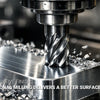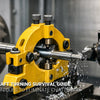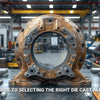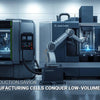How Do Bar Feeders and Automation Cut CNC Turning Time by 40%+ in High-Volume Production?
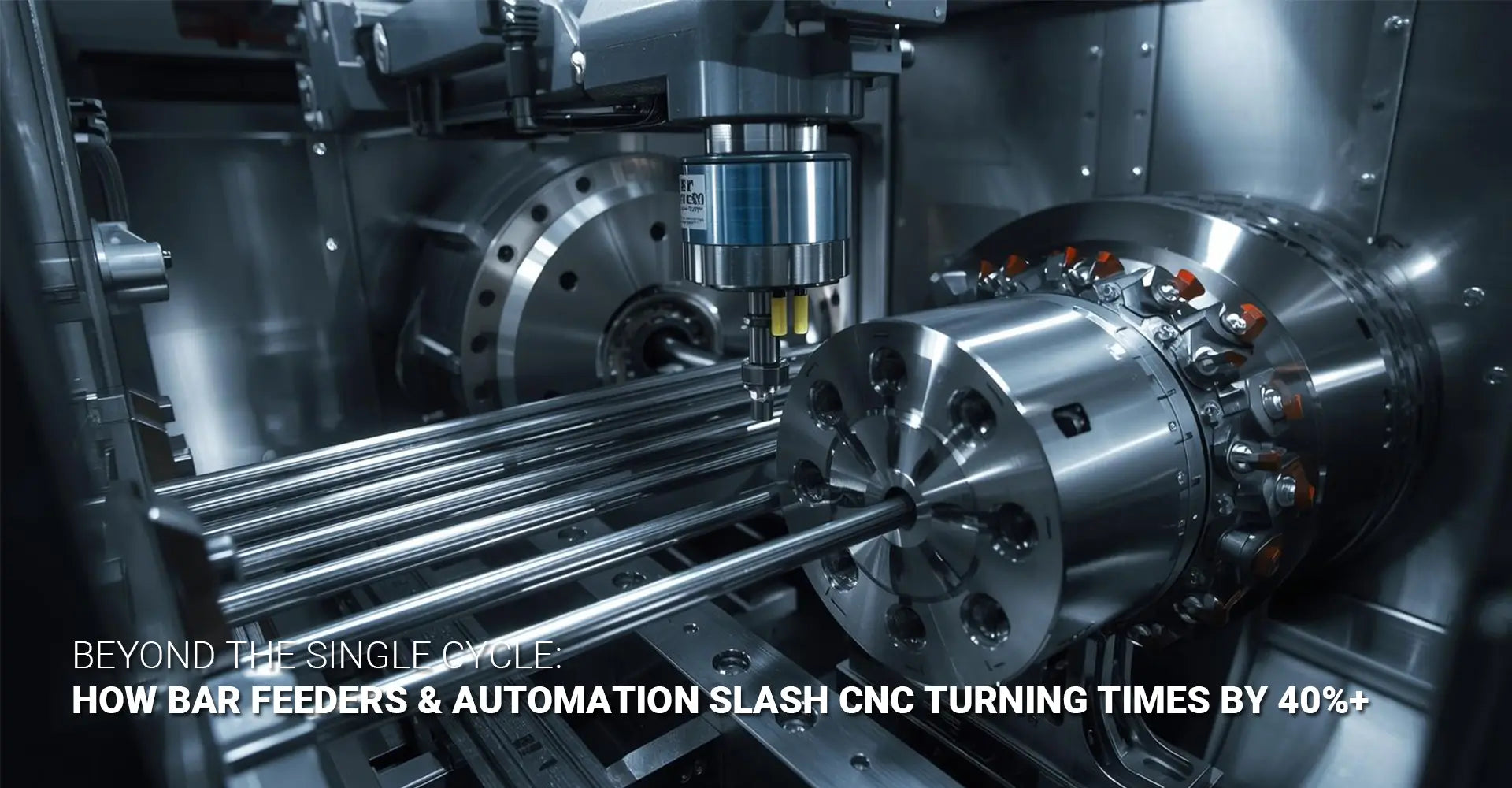
How Do Bar Feeders and Automation Cut CNC Turning Time by 40%+ in High-Volume Production?

Manual loading remains the silent killer of productivity in most machine shops today. While your CNC lathe can complete a part in three minutes, operators spend an additional two minutes loading, unloading, and measuring each piece. This means your $150,000 machine sits idle nearly 40% of the time, waiting for human hands to feed it work. Meanwhile, your competitors are running similar equipment around the clock with minimal supervision. The difference? They've embraced CNC turning automation through bar feeders and robotic loading systems that eliminate the start-stop cycle entirely.
Quick Answer: What You'll Gain from CNC Turning Automation
| Metric | Manual Operation | With Automation |
|---|---|---|
| Spindle Uptime | 50-60% | 85%+ |
| Throughput Increase | Baseline | 30-50% higher |
| Operator Supervision | Constant | Periodic checks only |
| Night/Weekend Production | Requires overtime | Runs unattended |
| ROI Timeline | N/A | 12-24 months |
| Best Applications | Low-volume custom work | Batches of 500-1,000+ parts |
Key Takeaway: Bar feeder productivity improvements come primarily from eliminating non-cutting time, not from faster spindle speeds. Therefore, your machine runs continuously instead of waiting for the next part.
Now that you understand the potential gains, let's explore exactly how different automation technologies work, when to use each type, and how to calculate whether the investment makes sense for your specific operation. Consequently, you'll be equipped to make an informed decision about upgrading your turning capacity.
Table of Contents
- What Is the Real Cost of Manual Loading in Your CNC Turning Operation?
- How Does a Bar Feeder Boost Shaft and Pin Production Throughput?
- When Should You Choose Robot Loading Over Bar Feeders?
- Why Does a 12-Station Turret Multiply Your Automation Benefits?
- How Can You Map a Complete Automated Turning Cell Workflow?
- What ROI Can You Expect from CNC Turning Automation Investment?
- Conclusion
What Is the Real Cost of Manual Loading in Your CNC Turning Operation?
The Hidden Productivity Drain
Every time your machinist opens the door, loads a new blank, closes the door, and hits the cycle start button, valuable seconds tick away. Moreover, these small delays accumulate into hours of lost production each week. Most shop managers focus on cutting speeds and feeds, yet they overlook the fact that their machines spend more time waiting than cutting.
The Numbers Behind Manual Operations
At a Glance:
- Average load/unload time: 45-90 seconds per part
- Door open/close cycles: 15-20 seconds per part
- Measurement and deburring pauses: 30-60 seconds every 5-10 parts
- Actual spindle uptime: Only 50-60% in typical manual operations
- Operator attention required: Nearly constant monitoring
The Compound Effect of Interruptions
Manual loading creates a cascading series of inefficiencies beyond the obvious time spent handling parts. First, operators must wait for the spindle to stop completely before opening the door, adding 5-8 seconds of dead time. Next, they need to inspect each part for quality, which means removing it from the work area and using measurement tools. Additionally, fatigue sets in after repetitive loading cycles, leading to inconsistent placement and occasional crashes.
The financial impact becomes clear when you calculate lost capacity. For instance, a machine running at 55% uptime produces 440 parts per eight-hour shift when each part requires a three-minute cycle. However, that same machine at 85% uptime through high-volume CNC turning automation produces 680 parts—a gain of 240 parts per shift. At a $5 profit margin per part, that's $1,200 in additional daily profit from a single machine.
Furthermore, manual operations prevent you from running production during lunch breaks, overnight, or on weekends without paying overtime. As a result, your expensive equipment sits completely idle for 16 hours every weekday, plus entire weekends. This represents a massive opportunity cost that automation directly addresses.
How Does a Bar Feeder Boost Shaft and Pin Production Throughput?
Understanding Bar Feeder Technology
A bar feeder for lathe operations works like a magazine that continuously pushes raw material through the spindle. Specifically, it holds multiple bars (typically 6-12 feet long) in a magazine and automatically advances fresh stock as each part is cut off. This simple mechanism eliminates all manual loading for parts made from bar stock.
The Core Advantages Explained
Quick Summary:
- Continuous material supply: 6-12 bars loaded at once
- Compatible materials: Round bar stock from 1/8" to 3" diameter (most common)
- Typical capacity: 4-8 hours of unattended runtime
- Best applications: Shafts, pins, bolts, bushings, and similar cylindrical parts
- Setup time: 5-10 minutes to load a full magazine
How Bar Feeders Create Continuous Production
The beauty of bar feeder productivity lies in its simplicity. Instead of opening the chuck to load each individual blank, the system continuously pushes bar stock through the headstock. After the CNC completes each part and the cutoff tool separates it, the bar automatically advances to the correct position for the next cycle. Consequently, the spindle never stops rotating except for scheduled tool changes.
Modern bar feeders include sensors that detect when a bar is nearly consumed. At that point, the system automatically switches to the next bar in the magazine without stopping the machine. This "bar-to-bar" transition happens in under 10 seconds, maintaining nearly constant production flow.
Material handling becomes remarkably efficient with this approach. An operator can load a full magazine of 10 bars (representing 200-300 parts) in roughly 10 minutes during a planned break. Then, the machine runs unattended for the next 4-6 hours while that operator supervises multiple other machines or performs secondary operations.
The technology particularly excels for parts under 6 inches in length made from common materials like aluminum, steel, brass, and stainless steel. For example, producing hydraulic shaft pins becomes a hands-off process where the machine churns out finished parts at a rate limited only by the cutting cycle itself, not by human intervention.
Additionally, bar feeders improve part quality consistency. Since the material feeds through the same collet position every time, there's no variation in how the workpiece sits in the chuck. This eliminates the small runout differences that occur with manual loading, resulting in tighter tolerances and less scrap.
When Should You Choose Robot Loading Over Bar Feeders?
The Geometry Question
Bar feeders work wonderfully for long, straight bar stock, but what about parts that start as castings, forgings, or pre-cut blanks? This is where CNC robot loading systems provide superior flexibility. These articulated arms can pick up irregularly shaped workpieces, load them into a chuck, wait for the cycle to complete, then remove and place finished parts into a collection bin.
Comparing the Two Technologies
Decision Matrix:
| Factor | Bar Feeder | Robot Loader |
|---|---|---|
| Part Geometry | Round bar stock only | Any shape: castings, forgings, blanks |
| Material Form | Long bars (6-12 feet) | Pre-cut pieces |
| Loading Method | Push through spindle | Pick and place into chuck |
| Flexibility | Limited to bar parts | Handles multiple part families |
| Typical Cost | $15,000-$40,000 | $50,000-$150,000 |
| Changeover Time | 5-10 minutes | 15-30 minutes for new part program |

When Robots Make More Sense
Robot loading systems shine in applications where part variety matters more than pure cycle time. For instance, if you produce a family of valve bodies from aluminum castings in batches of 500 each, switching between different sizes throughout the week, a robot provides the adaptability you need. The robot can be reprogrammed to handle different workpiece dimensions in minutes, whereas switching from one bar diameter to another with a bar feeder requires mechanical adjustments.
The loading process works through precise positioning. First, the robot picks a blank from a gravity-feed rack or pallet using a gripper designed for that part family. Next, it moves to the chuck, waits for the jaws to open (triggered by an M-code from the CNC program), places the workpiece precisely on center, and retracts. After the machining cycle completes, another M-code signals the robot to return, open the chuck, extract the finished part, and place it in a collection area.
An automated CNC turning cell with robot loading typically includes several components beyond just the robot arm:
- Parts presentation system: Gravity racks, bowl feeders, or pallet stations that orient blanks for pickup
- Gripper tooling: Custom end-effectors designed to grip your specific part geometry securely
- Safety enclosure: Fencing with interlocked gates to protect operators
- Vision system (optional): Cameras that verify part presence and orientation
- Dual-station capability: Some systems load one spindle while the other is cutting, maximizing throughput
The key advantage becomes apparent when you calculate total flexibility. A shop producing 15 different part numbers in monthly batches can use one robot-loaded machine to handle all of them. In contrast, bar feeder applications work best when you're running the same part family repeatedly, such as in dedicated high-volume production lines.
However, cycle time suffers slightly with robot loading compared to bar feeders. The robot needs roughly 8-15 seconds to complete a full load/unload sequence, whereas a bar feeder adds only 2-3 seconds between parts. Therefore, for ultra-short cycle work (parts under two minutes), bar feeders deliver higher total output. For longer cycles (five minutes or more), the robot's load time becomes a smaller percentage of total time, making it a viable choice even in high-volume scenarios.
Why Does a 12-Station Turret Multiply Your Automation Benefits?
Tooling Capacity Enables Lights-Out Production
Automation eliminates loading delays, but what happens when your machine needs to stop for a tool change? This is where a multi-station turret CNC lathe becomes critical. With 12 indexed tool positions, you can load every tool required for a complete part—roughing, finishing, grooving, threading, and cutoff—all at once. As a result, the machine completes parts without any tooling interruptions.
The Synergy Between Tools and Automation
Quick Facts:
- Typical turret capacity: 8, 10, or 12 tool stations
- Tool change time: 1-2 seconds per index (automatic)
- Processes consolidated: OD turning, ID boring, threading, grooving, cutoff, drilling
- Uptime benefit: Eliminates manual tool swaps during unattended runs
- Best practice: Always include backup tools for critical operations

How Tool Capacity Enables True Lights-Out Machining
Lights-out machining becomes possible only when you eliminate all reasons for human intervention. Material supply gets handled by the bar feeder or robot, but tool management poses a separate challenge. Consider a typical shaft that requires five operations: rough turn the OD, finish turn to tolerance, cut a groove, thread the end, and part off. With a small 6-position turret, you'd use up most positions just for this single part, leaving no room for redundancy.
A 12-station turret changes the equation entirely. Now you can dedicate positions 1-2 for roughing (perhaps a heavy insert and a lighter one for different cut depths), positions 3-4 for finishing at different diameters, position 5 for grooving, positions 6-7 for internal threading (right and left hand), position 8 for external threading, position 9 for drilling if needed, position 10 for chamfering, and positions 11-12 for cutoff tools. This redundancy means that even if one insert starts to wear, you've programmed backup tools into the cycle.
Tool life management becomes crucial in automated operations. Your CNC control monitors each tool's usage by tracking the number of parts completed. When a tool approaches its expected life (say, 500 parts), the program automatically switches to the backup tool in the next turret position without stopping production. Meanwhile, a warning message alerts the operator that tool #3 needs replacement during the next convenient break.
Process consolidation delivers another major benefit through CNC cycle time reduction. Instead of turning a part on one machine, then moving it to a second machine for threading, and finally to a third for grooving, a well-equipped lathe with sufficient tooling completes everything in a single setup. This eliminates handling time, reduces work-in-process inventory, and prevents the tolerance stack-up that occurs when a part passes through multiple fixtures.
The turret's indexing speed matters too. Modern designs rotate to the next tool position in 1-2 seconds, which seems trivial until you multiply it across thousands of parts. A slow 5-second tool change on a part requiring eight tool changes adds 40 seconds per piece—a significant factor when cycle times are measured in minutes.
For shops implementing batch production automation, the combination of a 12-station turret and material automation creates a powerful multiplication effect. The turret ensures that tooling never limits your production capacity, while the bar feeder or robot ensures that material never runs out. Together, they enable true unattended operation during nights, weekends, and holidays, transforming your capital equipment from an 8-hour asset into a 24-hour profit center.
How Can You Map a Complete Automated Turning Cell Workflow?
Visualizing the End-to-End Process
Understanding how all components work together helps you identify potential bottlenecks before installing equipment. An automated turning cell isn't just a lathe with a feeder attached—it's an integrated system where material flow, cutting operations, chip management, and part collection must all synchronize perfectly.
The Core Workflow Stages
System Components Checklist:
- Material loading - Bar feeder magazine or robot parts rack
- Workholding - Collet chuck or hydraulic jaws with quick-change capability
- Machining operations - Multi-station turret executing all cutting operations
- Chip evacuation - Conveyor system removing swarf continuously
- Part ejection - Catcher or conveyor receiving finished parts
- Quality verification - Optional in-process gauging or post-process CMM sampling
- System monitoring - Control interface showing real-time status and alerts
Building a Fully Integrated Turning Cell
The workflow begins with material preparation. For bar feeder operations, an operator loads the magazine with 8-10 bars during a planned setup period. The feeder's pusher mechanism then advances the first bar through the guide tube and into the spindle collet. The CNC program sends an M-code to close the collet, gripping the bar securely. Now the machine is ready to begin its first cutting cycle.
As the turret indexes through each tool position, the cutting process generates a continuous stream of chips. This is where CNC uptime improvement depends heavily on proper chip management. An undersized chip conveyor that jams will stop production just as surely as running out of material. Therefore, modern cells include high-capacity hinged conveyors that run continuously, pulling chips away from the cutting zone and dumping them into a collection cart. Some shops add chip processing equipment that separates metal from coolant, allowing both to be recycled.
The cutting cycle proceeds through roughing, finishing, and secondary operations as programmed. When the cutoff tool severs the finished part, it drops (or gets ejected by air blast) into a part catcher positioned below the spindle. Part catchers prevent damage by cushioning the fall and often include a sensor that confirms each part's arrival. If a part fails to land in the catcher, the sensor triggers an alarm, stopping production to prevent a crash.
For operations requiring extremely tight tolerances, some cells incorporate in-process gauging. A probe mounted in the turret touches critical diameters after finish turning, measuring them while the part is still in the chuck. If dimensions drift outside tolerance, the CNC automatically applies tool offset corrections to bring subsequent parts back to nominal. This closed-loop control enables holding tolerances of ±0.0002" even during multi-hour unattended runs.
The monitoring system forms the cell's nervous system. Operators don't stand and watch automated equipment—they supervise multiple machines from a central station. The CNC displays real-time data: parts completed this shift, current tool in use, estimated time until bar depletion, coolant level, and any active alarms. Many shops implement network monitoring where production data flows to an MES (manufacturing execution system), allowing managers to track overall equipment effectiveness from their office.
Scheduled maintenance windows become part of the workflow. Even highly automated cells need periodic attention. Every 4-6 hours, an operator performs a quick check: inspect tools for wear, verify coolant level, empty the chip bin if needed, and reload the bar magazine. These interventions take only 10-15 minutes but keep the cell running reliably for the next several hours.
Finally, quality sampling ensures that long unattended runs maintain specification. While the cell might run for eight hours overnight, best practice dictates checking the first part after startup, one part mid-run (pulled from the catcher), and the last part before shutdown. This sampling catches any gradual drift in tool wear or material variation before producing significant scrap.
What ROI Can You Expect from CNC Turning Automation Investment?
Building Your Business Case
Every automation decision ultimately comes down to financial justification. While the productivity benefits sound compelling, you need concrete numbers to present to ownership or secure financing. Fortunately, calculating return on investment for turning automation follows a straightforward process based on measurable factors.
The ROI Formula and Key Variables
Basic Calculation:
ROI (months) = Total Investment ÷ Monthly Savings
Investment Components:
- Bar feeder or robot system: $15,000-$150,000 (depending on type)
- Installation and integration: $5,000-$15,000
- Tooling upgrades (if needed): $3,000-$8,000
- Safety enclosure or guarding: $2,000-$10,000
- Training and programming: $2,000-$5,000
Monthly Savings Sources:
- Labor reduction: (Operator hourly rate × Hours freed per month)
- Increased output: (Additional parts per month × Profit margin per part)
- Scrap reduction: (Fewer bad parts × Part cost)
- Overtime elimination: (OT hours avoided × OT rate)
Real-World ROI Scenarios
Let's work through two realistic examples to demonstrate how the math plays out in different production environments.
Scenario 1: Medium-Volume Shaft Production with Bar Feeder
A shop produces hydraulic pump shafts in batches of 1,000 pieces monthly. Currently, one operator runs the lathe manually during day shift only (160 hours/month). Each part has a 4-minute cycle time, but manual loading adds 1.5 minutes, making total time per part 5.5 minutes. Therefore, output is roughly 1,750 parts per month at maximum capacity.
After installing a $35,000 bar feeder system (including installation):
- Cycle time returns to 4 minutes (machine-only time)
- The machine runs 20 hours per day (4 hours for setup, maintenance, and material loading)
- Monthly output increases to 7,200 parts (600 hours × 60 minutes ÷ 4 minutes per part)
Financial impact:
- Labor savings: Operator now supervises this machine plus two others, effectively freeing up 120 hours/month. At $28/hour with burden, that's $3,360 monthly savings.
- Increased output: Customer demands 3,000 shafts monthly. Previously required outsourcing 1,250 pieces at $12 each ($15,000 cost). Now produced in-house at $7 material/labor cost, saving $5 per part × 1,250 = $6,250 monthly.
- Overtime elimination: Previously ran 40 OT hours monthly to meet demand. At $42/hour, that's $1,680 saved.
Total monthly savings: $11,290
ROI period: $35,000 ÷ $11,290 = 3.1 months
Scenario 2: Job Shop Using Robot Loader for Varied Parts
A contract manufacturer produces 12 different aluminum castings in batches ranging from 500 to 2,000 pieces. Cycle times vary from 6 to 14 minutes depending on complexity. They invest $85,000 in a robot loading system with quick-change grippers and safety enclosure.
Since parts and quantities vary, the analysis focuses on machine utilization rather than specific part numbers:
- Previous utilization: 52% (machine cutting 4.2 hours per 8-hour shift)
- Post-automation utilization: 78% (machine cutting 15.6 hours per 20-hour automated day)
This represents 11.4 additional cutting hours per day, or 342 hours per month. At an average shop rate of $85/hour, that's $29,070 in additional capacity. However, not all new capacity immediately finds work, so they conservatively estimate filling 60% of it, generating $17,442 in monthly revenue.
Material and labor costs consume approximately 40% of revenue, leaving 60% contribution margin: $17,442 × 0.60 = $10,465 monthly benefit.
Additionally:
- Labor redeployment: Operator previously dedicated to this machine now does inspection and deburring work that was outsourced. Savings: $2,800/month.
- Scrap reduction: Consistent robot placement reduces crashes and tolerance issues. Estimated savings: $800/month.
Total monthly savings: $14,065
ROI period: $85,000 ÷ $14,065 = 6.0 months
Hidden Costs to Consider
While these examples show attractive payback periods, successful implementations also budget for:
Ongoing consumables: Cutting tools wear faster during extended runtime. Budget an additional 40-60% in tool costs compared to manual operation due to higher total output.
Maintenance contracts: Bar feeders and robots need annual service. Expect $1,500-$3,000 annually.
Utility costs: Running equipment 20 hours instead of 8 increases electricity consumption, though the incremental cost is small (roughly $200-400 monthly).
Programming time: Initial setup and optimization of automated cycles takes 20-40 hours of engineering time, representing a one-time soft cost.
Even accounting for these factors, most shops achieve payback within 18-24 months, with pure profit flowing afterward for the 8-10 year life of the automation equipment.
Conclusion
Automation transforms CNC turning from a labor-intensive process into a high-output, low-touch operation that generates profit around the clock. Bar feeders excel at delivering unmatched productivity for shaft and pin production from bar stock, while robot loading systems provide the flexibility needed for castings and varied part families. When paired with a 12-station turret holding all required tools, these systems enable true lights-out operation where machines run for hours without human intervention.
The financial case for automation becomes compelling once you calculate the real costs of manual loading: wasted machine uptime, overtime premiums, limited weekend production, and operator fatigue leading to quality issues. Most implementations achieve payback within 12-24 months through a combination of labor savings, increased throughput, and scrap reduction. After that, the productivity gains flow directly to your bottom line.
Success requires more than just buying equipment. You need proper chip management to prevent jams, robust tool life monitoring to avoid crashes, and reliable part catchers to protect finished work. However, shops that address these details create highly profitable production cells that operate with minimal supervision.
Whether you're producing 500 parts per month or 50,000, automation scales to meet your needs. The key is matching the technology—bar feeder versus robot, turret capacity, monitoring systems—to your specific part geometry, batch sizes, and growth plans. Start by identifying your biggest bottleneck, calculate the potential savings using the formulas provided, and build a business case that demonstrates clear ROI. Your competitors are already running while you sleep—now you know how to catch up and surpass them.
Recommended Resources
[CNC turning automation bar feeder productivity][^1]
[Multi-station turret CNC lathe][^2]
[Automated CNC turning cell][^3]
[High-volume CNC turning][^4]
[CNC cycle time reduction][^5]
[CNC robot loading][^6]
---
[^1]: Discover how CNC turning automation can enhance productivity and efficiency in manufacturing processes.
[^2]: Learn about the features and benefits of Multi-station turret CNC lathes for improved machining capabilities.
[^3]: Explore this link to understand the efficiency and technology behind automated CNC turning cells.
[^4]: Discover the advantages of high-volume CNC turning for increased productivity and cost-effectiveness.
[^5]: Explore this link to discover proven techniques that can significantly enhance your CNC machining efficiency.
[^6]: Learn about the advantages of CNC robot loading and how it can streamline your production line.

